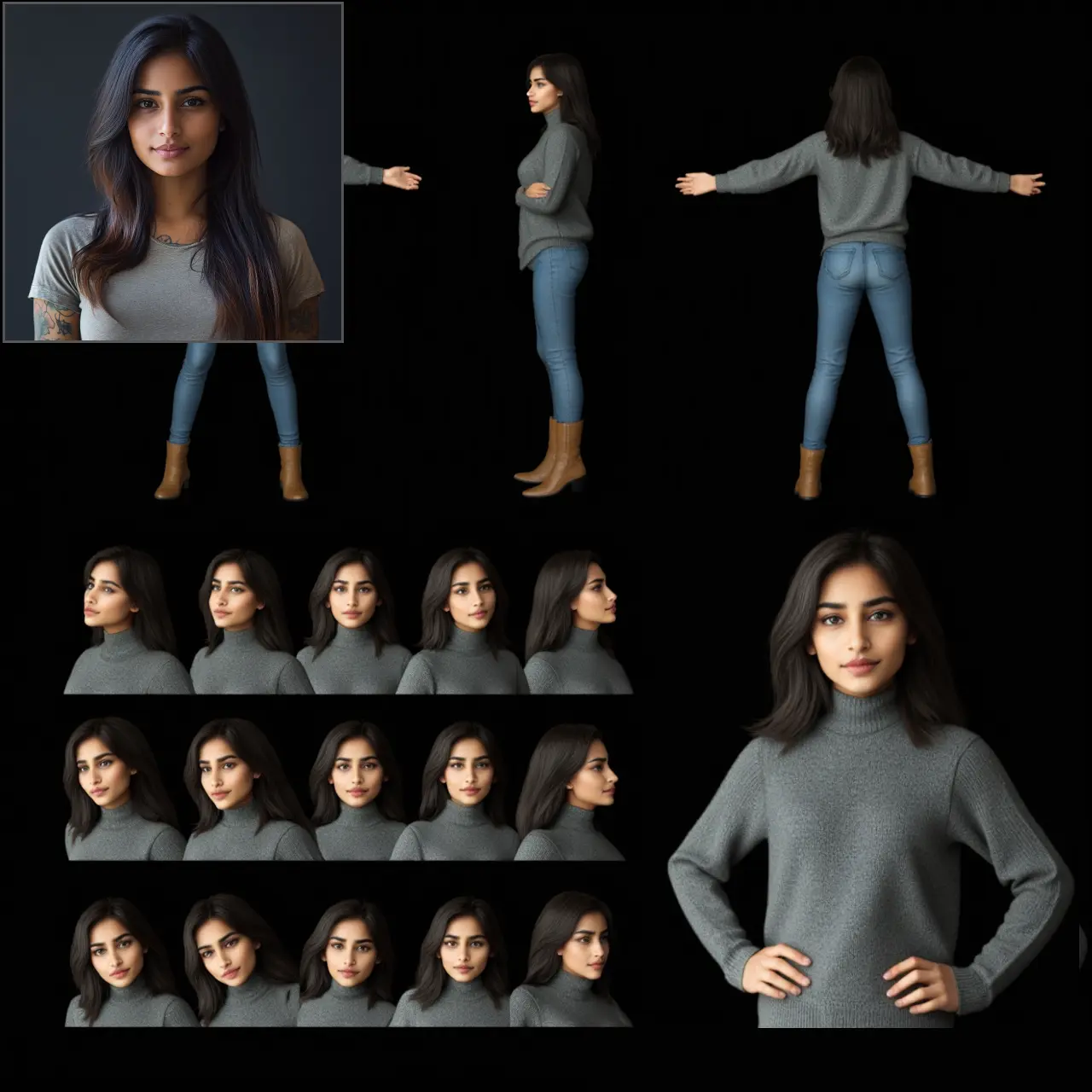ComfyUI Node: TCD Model Sampling Discrete
TCDModelSamplingDiscrete
Categoryadvanced/model
JettHu (Account age: 2642days) Extension
ComfyUI-TCD Latest Updated
2024-07-31 Github Stars
0.13K
How to Install ComfyUI-TCD
Install this extension via the ComfyUI Manager by searching for ComfyUI-TCD- 1. Click the Manager button in the main menu
- 2. Select Custom Nodes Manager button
- 3. Enter ComfyUI-TCD in the search bar
Visit ComfyUI Online for ready-to-use ComfyUI environment
- Free trial available
- 16GB VRAM to 80GB VRAM GPU machines
- 400+ preloaded models/nodes
- Freedom to upload custom models/nodes
- 200+ ready-to-run workflows
- 100% private workspace with up to 200GB storage
- Dedicated Support
TCD Model Sampling Discrete Description
Enhances AI model sampling for high-quality discrete outputs with advanced techniques and specialized controls.
TCD Model Sampling Discrete:
The TCDModelSamplingDiscrete node is designed to enhance the sampling process in AI models, particularly for generating high-quality outputs in a discrete manner. This node leverages advanced techniques to refine the model's sampling strategy, ensuring more accurate and efficient results. By integrating a specialized scheduler and denoising mechanism, it allows for fine-tuning the sampling steps and noise levels, which can significantly improve the quality of the generated outputs. This node is particularly useful for AI artists looking to achieve precise control over their model's sampling process, leading to more consistent and desirable results.
TCD Model Sampling Discrete Input Parameters:
model
This parameter represents the AI model that will be used for sampling. It is a required input and should be a pre-trained model that you wish to refine using the discrete sampling method provided by this node.
steps
This integer parameter defines the number of sampling steps to be performed. The default value is 4, with a minimum of 1 and a maximum of 50. Increasing the number of steps can lead to more refined outputs but may also increase the computation time.
scheduler
This parameter specifies the scheduler to be used during the sampling process. It accepts a predefined set of scheduler names, such as simple, normal, karras, exponential, sgm_uniform, and ddim_uniform. The choice of scheduler can affect the behavior and efficiency of the sampling process.
denoise
This float parameter controls the level of denoising applied during the sampling process. It ranges from 0.0 to 1.0, with a default value of 1.0. A higher denoise value results in cleaner outputs, while a lower value may retain more noise but can be useful for certain artistic effects.
eta
This float parameter influences the amount of noise added during the sampling process. It ranges from 0.0 to 1.0, with a default value of 0.3. Adjusting this parameter can help balance the trade-off between noise and detail in the generated outputs.
TCD Model Sampling Discrete Output Parameters:
MODEL
This output represents the refined model after applying the discrete sampling process. It can be used for further inference or additional processing steps.
SAMPLER
This output provides the sampler object configured with the specified parameters. The sampler is responsible for executing the sampling process according to the defined steps, scheduler, denoise, and eta values.
SIGMAS
This output is a tensor containing the sigma values used during the sampling process. These values are crucial for understanding the noise levels at each step and can be useful for debugging or further analysis.
TCD Model Sampling Discrete Usage Tips:
- Experiment with different
scheduleroptions to find the one that best suits your specific use case and desired output quality. - Adjust the
stepsparameter to balance between computation time and output refinement. More steps generally lead to better results but require more processing power. - Use the
denoiseparameter to control the level of noise in your outputs. Higher values result in cleaner images, while lower values can add interesting noise effects. - Fine-tune the
etaparameter to achieve the desired balance between noise and detail in your generated outputs.
TCD Model Sampling Discrete Common Errors and Solutions:
"Denoise value must be greater than 0"
- Explanation: The denoise parameter was set to 0 or a negative value, which is not allowed.
- Solution: Ensure that the denoise parameter is set to a value greater than 0.0.
"Invalid scheduler name"
- Explanation: The scheduler parameter was set to a name that is not recognized.
- Solution: Use one of the predefined scheduler names such as
simple,normal,karras,exponential,sgm_uniform, orddim_uniform.
"Steps value out of range"
- Explanation: The steps parameter was set to a value outside the allowed range of 1 to 50.
- Solution: Adjust the steps parameter to be within the range of 1 to 50.
"Model input is required"
- Explanation: The model parameter was not provided.
- Solution: Ensure that a valid model is passed to the node as an input parameter.
TCD Model Sampling Discrete Related Nodes
RunComfy is the premier ComfyUI platform, offering ComfyUI online environment and services, along with ComfyUI workflows featuring stunning visuals. RunComfy also provides AI Playground, enabling artists to harness the latest AI tools to create incredible art.


